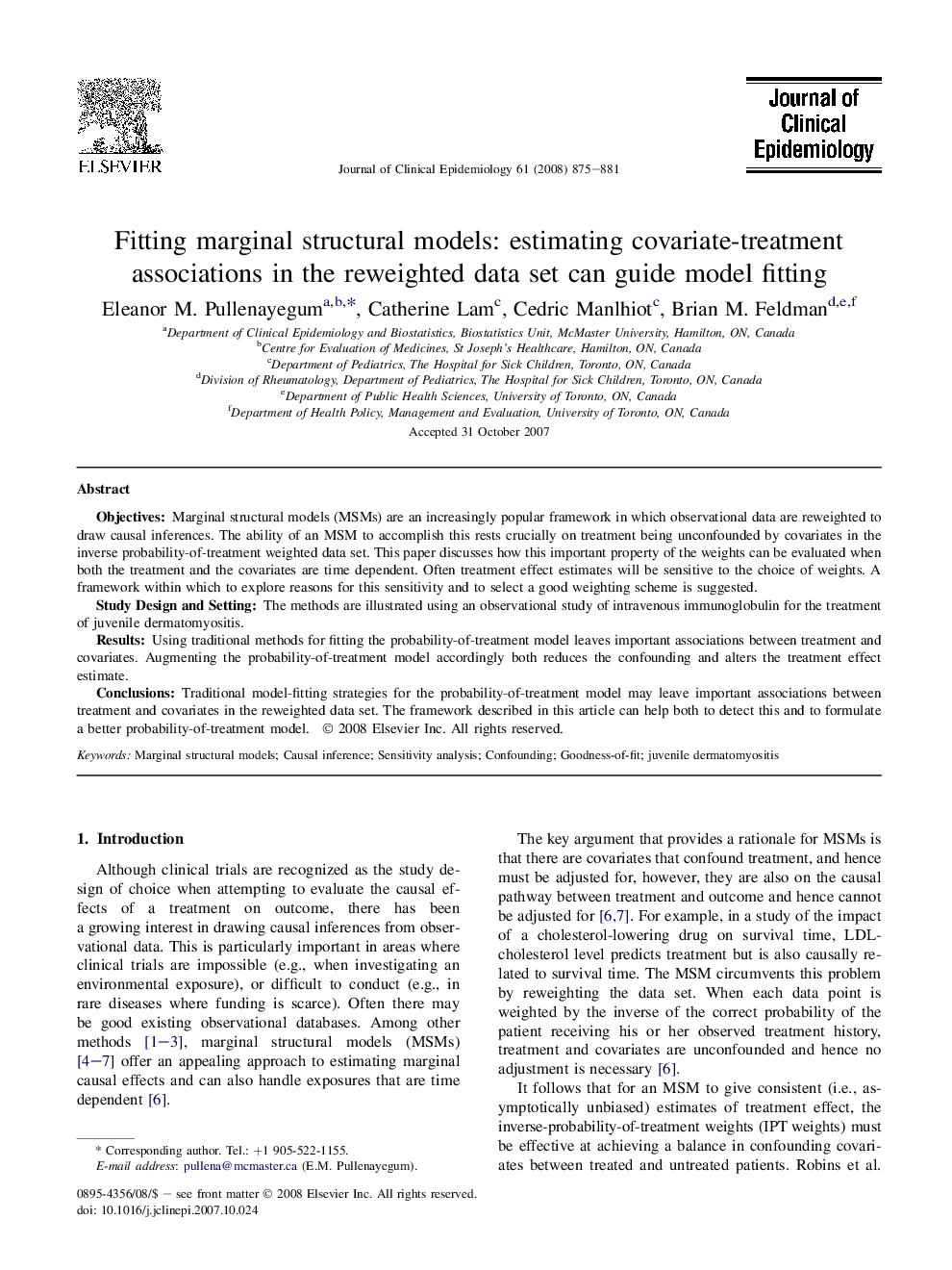| Article ID | Journal | Published Year | Pages | File Type |
|---|---|---|---|---|
| 1083369 | Journal of Clinical Epidemiology | 2008 | 7 Pages |
ObjectivesMarginal structural models (MSMs) are an increasingly popular framework in which observational data are reweighted to draw causal inferences. The ability of an MSM to accomplish this rests crucially on treatment being unconfounded by covariates in the inverse probability-of-treatment weighted data set. This paper discusses how this important property of the weights can be evaluated when both the treatment and the covariates are time dependent. Often treatment effect estimates will be sensitive to the choice of weights. A framework within which to explore reasons for this sensitivity and to select a good weighting scheme is suggested.Study Design and SettingThe methods are illustrated using an observational study of intravenous immunoglobulin for the treatment of juvenile dermatomyositis.ResultsUsing traditional methods for fitting the probability-of-treatment model leaves important associations between treatment and covariates. Augmenting the probability-of-treatment model accordingly both reduces the confounding and alters the treatment effect estimate.ConclusionsTraditional model-fitting strategies for the probability-of-treatment model may leave important associations between treatment and covariates in the reweighted data set. The framework described in this article can help both to detect this and to formulate a better probability-of-treatment model.
